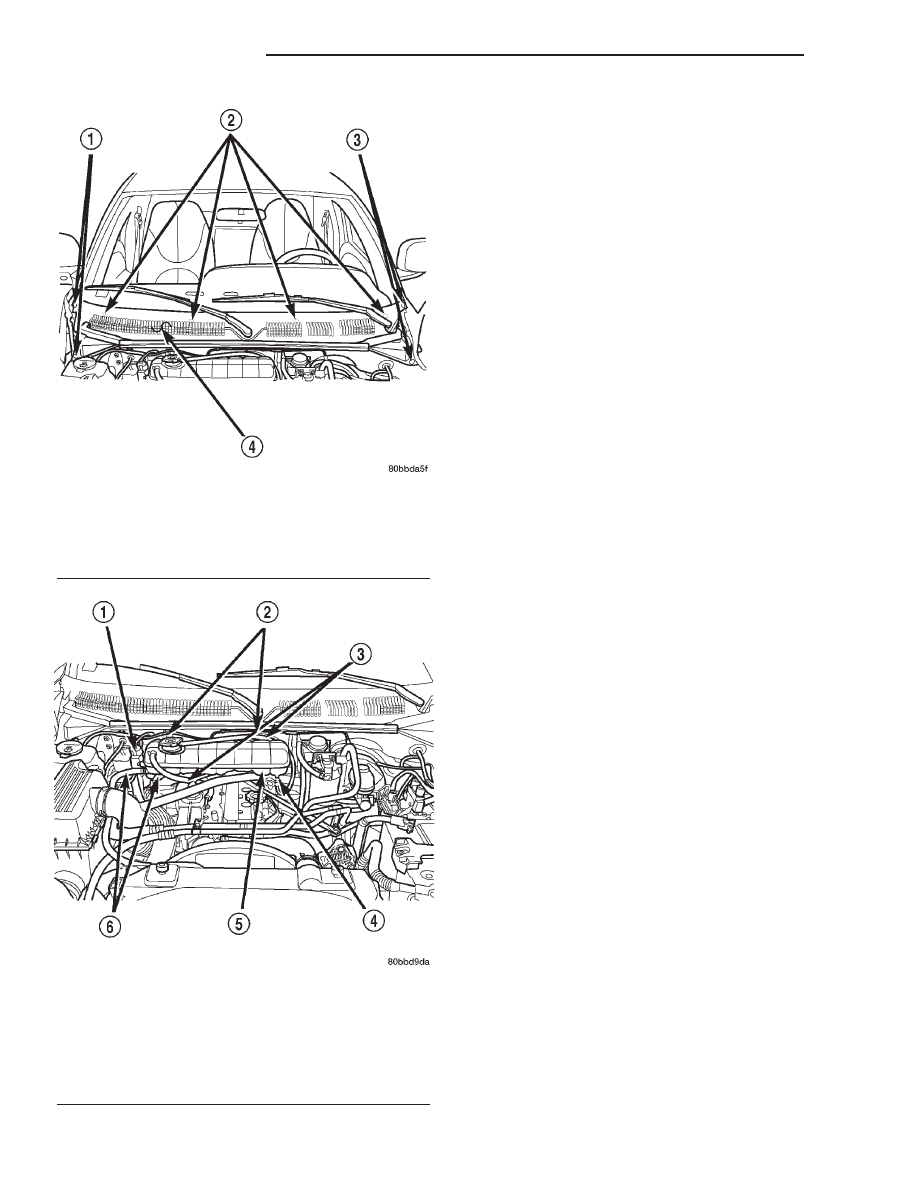Dodge Dakota (R1). Manual - part 270

INSTALLATION
(1) Position the coolant reservoir and connect the
coolant supply hoses (Fig. 22).
(2) Install the coolant reservoir retaining bolts
from inside the cowl panel (Fig. 22). Torque bolts to
12 N·m (106 in. lbs.).
(3) Connect the coolant level sensor electrical con-
nector (Fig. 22).
(4) Install the EGR solenoid on the coolant reser-
voir (Fig. 22).
(5) Install the coolant overflow hoses on the cool-
ant reservoir (Fig. 22).
(6) Install the cowl grille (Fig. 23)(Refer to 23 -
BODY/EXTERIOR/COWL
GRILLE
-
INSTALLA-
TION).
(7) Raise the vehicle on the hoist.
(8) Install the lower front splash shield.
(9) Lower the vehicle on the hoist.
(10) Fill the cooling system (Refer to 7 - COOL-
ING/ENGINE - DESCRIPTION).
(11) Install both of the wiper arms on the vehicle.
Refer to Wiper and Washer Systems for the proce-
dure.
(12) Connect the negative battery cable.
Fig. 22 Cowl Grille
1 - PUSHPINS
2 - COWL GRILLE RETAINING NUTS
3 - PUSHPINS
4 - COWL GRILLE
Fig. 23 Coolant Reservoir Position & Orientation
1 - EGR SOLENOID
2 - COOLANT RESERVOIR RETAINING BOLTS
3 - COOLANT OVERFLOW HOSES
4 - COOLANT LEVEL SENSOR
5 - COOLANT RESERVOIR
6 - COOLANT SUPPLY HOSES
7a - 26
2.5L VM DIESEL
R1
COOLANT TANK (Continued)